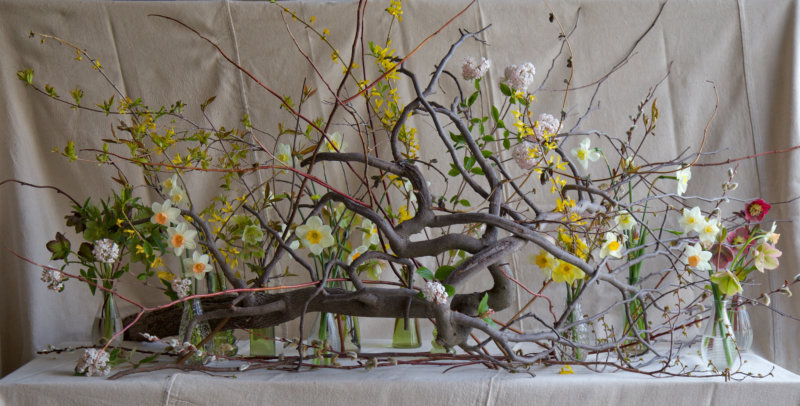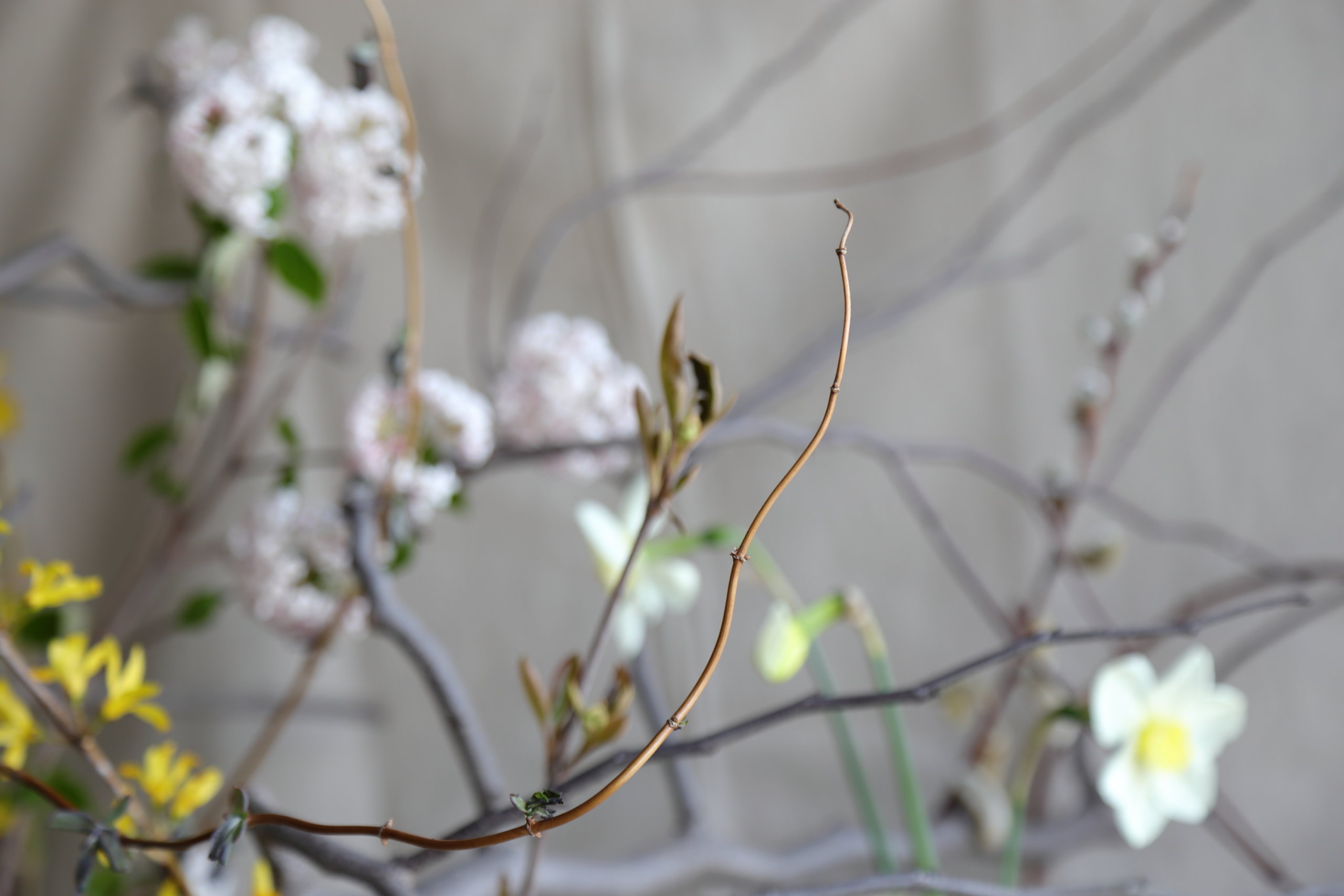Viewing the Garden in a New Way
During our extended closure as a result of the COVID-19 pandemic, the Botanical Garden team has used social media to share what’s growing and flowering in the Garden from week to week as spring progresses. Director of Horticulture and Education Kelly Norris created this botanical tableau on April 16 before the snow fell in order to capture the spirit of the Garden in a different way.

“This winter one of two Cercis canadensis ‘Ruby Falls’, a weeping variety, died in the hillside garden. Rather than simply cut it down and shred it, we decided to keep it so as to honor its beautiful shape one last time,” says Kelly.
“As redbuds begin to show color, this botanical tableau gives a nod to the dozens of them growing in the hillside garden and the cast of spring characters they share the Garden with.”
The tableau only features botanical textures and flowers gleaned from the Botanical Garden with no artificial manipulation other than cutting to fit stems to vases. This authentic form of arrangement presents the plants, their personalities and properties as you would see them in a walk around the Garden.
“While the snowfall of April 16-17 dampens our enthusiasm for spring,” Kelly admits, “it’s a reminder that in a fickle Midwestern climate, resilience is what makes a garden endure.”
Plants featured in the tableau as we found them on April 16:
- Acer ginnala ‘Flame’ (Flame Tartarian maple)
- Cercis canadensis ‘Ruby Falls’ (Ruby Falls weeping redbud)
- Forsythia x intermedia ‘Lynwood’ (Lynwood forsythia)
- Fritillaria uva-vulpis (fox’s grape fritillary)
- Helleborus x iburgensis ‘Molly’s White’ (Molly’s White hybrid Lenten rose)
- Helleborus x iburgensis ‘Pippa’s Purple’
- Helleborus ‘Jade Tiger’ (Jade Tiger Lenten rose)
- Itea virginica ‘Henry’s Garnet’ (Henry’s Garnet sweetspire)
- Lonicera reticulata ‘Kintzley’s Ghost’ (Kintzley’s Ghost honeysuckle)
- Narcissus ‘Ringtone’ (Ringtone daffodil)
- Narcissus ‘Katie Heath’ (Katie Heath daffodil)
- Narcissus ‘Sweet Love’ (Sweet Love daffodil)
- Narcissus x medioluteus (primrose peerless daffodil)
- Ostrya virginiana (ironwood)
- Salix chaenomeloides (Japanese pussy willow)
- Viburnum x carlesii (Koreanspice viburnum)
- Viburnum cassinoides ‘J.N. Select’ (Freedom™ witherod viburnum)






